Mercedes Benz 63SL AMG 2024
The Mercedes-Benz SL-Class (marketed as Mercedes-AMG SL since 2022) is a grand touring sports car manufactured by Mercedes-Benz since 1954. The designation SL derives from the German Sport-Leicht (English: Sport Light).
Initially, the first 300 SL was a racing sports car built in 1952 with no intention of developing a street version. In 1954, an American importer Max Hoffman suggested the street version of 300 SL for the wealthy performance car enthusiasts in the United States where the market for the personal luxury car was booming after the Second World War.
Mercedes-Benz launched the sixth generation SL, internally designated R231, at the North American International Auto Show in January 2012. The R231 introduced aluminum bodywork, its weight advantage offset by higher safety and convenience equipment.
New features included a system marketed as 'FrontBass', which used space in the aluminium structure ahead of the front footwells as resonance spaces for the bass loudspeakers. Additionally, standard equipment included an adaptive windscreen wipe/wash system which supplied fluid from the wiper blade itself, as needed and depending on the direction of wipe. The R231 was available with two suspension systems: semi-active adjustable damping as standard and active suspension system ABC (Active Body Control) as an extra-cost option. Both types featured electro-mechanical, speed-sensitive power steering, which allowed the variable steering ratio across the steering wheel angle.
The R231 was longer and wider than its predecessor. Shoulder room is increased by 37 mm (1.5 in) and elbow room 28 mm (1.1 in).
A mid-cycle update was introduced in 2016 for the 2017 model year along with revised engine and transmission options. A 9G-TRONIC Plus 9-speed automatic transmission was fitted to the SL-Class for the first time (SL 400/SL 450 and SL 500) while AMG SPEEDSHIFT MCT and AMG SPEEDSHIFT Plus 7G-TRONIC 7-speed automatic transmissions for SL 63 AMG and SL 65 AMG respectively remained unchanged. SL 350 was renamed as SL 400 (SL 450 for the North American market).
R231 had a revised front end, front grille treatment, and larger non-functional side 'vents' behind the front wheels. It also received adaptive LED front headlights with integrated daytime running lights and turn signals, leaving the below-bumper intake area free from lighting. The LED tail lights received single-colour red lenses (for North American market) or red-and-amber lenses (for the European and international markets) instead of the red and white lenses of the pre-facelift models.
A slight revision to the folding 'Vario-roof' hardtop meant it could deploy at up to 40 km/h (25 mph) without the luggage compartment partition having to be deployed in a separate manual operation.
The seventh generation of the SL-Class was presented in October 2021. The R232 is confirmed to be an AMG model only, designating it as Mercedes-AMG SL-Class. There are three powertrains, the entry-level powertrain being a 2.0L I4 mild hybrid engine found in the SL 43, producing 280 kW (375 hp). Two of the powertrains are 4.0L V8 biturbo gasoline engines, with the SL 55 developing a maximum of 350 kW (476 PS; 469 bhp) & 700 N⋅m (516 lb⋅ft), and the SL 63 developing a maximum of 430 kW (585 PS; 577 bhp) & 800 N⋅m (590 lb⋅ft). Both versions are available only with all-wheel-drive, a first for the SL-Class. The R232 is reverting to the soft fabric roof rather than the heavier retractable hardtop that was fitted to the R230 and R231.[6][7]
This generation is the first SL-Class to have the 2+2 seating configuration as standard rather than optional fitment since 1989 with the introduction of R129. While R107 was built to be two-seater convertible, the owners could opt for the 2+2 seating configuration when ordering their R107 or for the retrofit kit to be installed in their R107 at later date. The rear seats are optimal for the passengers whose height is up to 1.5 metres.
The dashboard is symmetrical along with the 12.3-inch digital instrument cluster and an 11.9-inch touchscreen panel in the centre. The instrument cluster is placed within a binnacle as to reduce the reflections from the sunlight and improve the legibility when the roof is folded down. The touchscreen panel in the centre is electrically tiltable to the vertical position for the same reason.
-
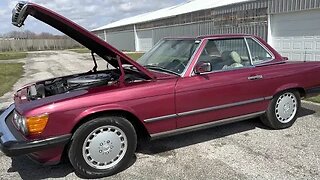 1:38
1:38
Country Classic Cars
1 year ago1989 Mercedes-Benz 560 SL R107
12 -
 1:01
1:01
Country Classic Cars
1 year ago $0.02 earned1999 Mercedes Benz SL600 V12
34 -
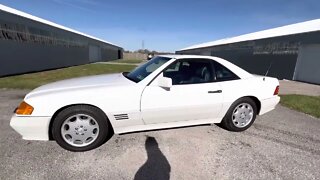 1:00
1:00
Country Classic Cars
1 year ago $0.01 earned1994 Mercedes-Benz SL300
10 -
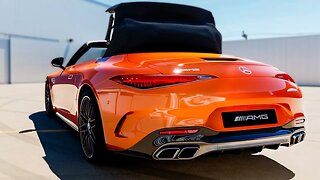 1:38
1:38
CAR TV
10 months ago $0.05 earned2024 Mercedes-AMG SL 63 Manufaktur Big Sur
594 -
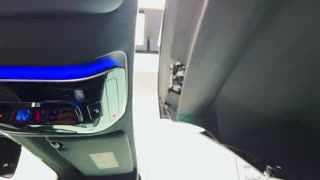 13:04
13:04
aankarplos
1 year agoMercedes-AMG SL (2022) - Futuristic Sport Car!
64 -
 3:21
3:21
Artsanac WebTV
1 year agoMercedes Benz SL 380 V8
10 -
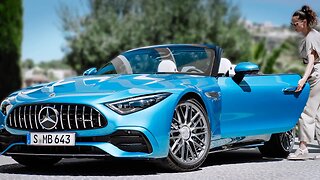 4:09
4:09
CAR TV
2 years agoTHE NEW 2023 MERCEDES SL 43 AMG
32 -
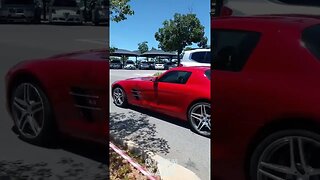 0:12
0:12
RTECH Cars
1 year agoMercedes-Benz SLS AMG
8 -
 1:52
1:52
Country Classic Cars
1 year ago2006 Mercedes Benz S500 AMG Sport Package (W220)
5 -
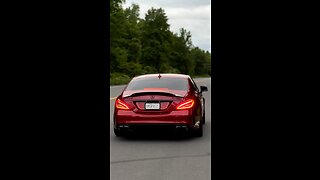 0:13
0:13
MurkoTheGoatTV
1 year agoMercedes Benz AMG C63 🔥